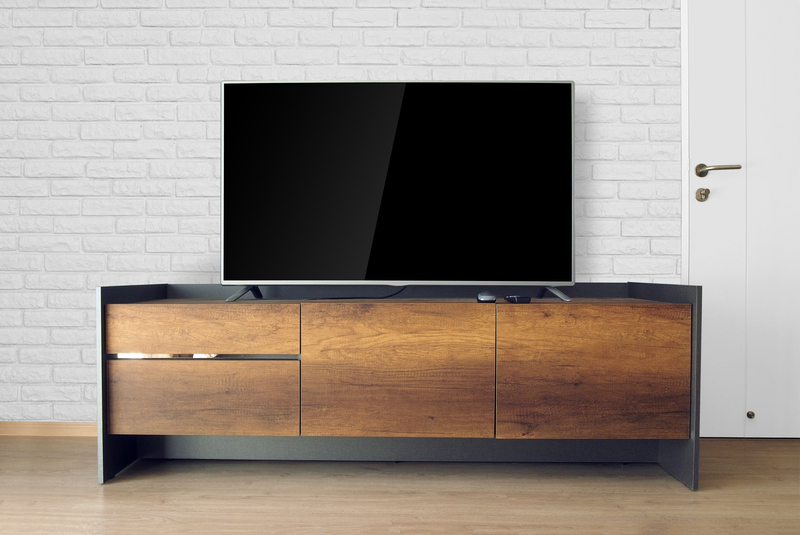Professional Sofa Storage: Tips for Lasting Freshness
Posted on 27/05/2025
Professional Sofa Storage: Tips for Lasting Freshness
Sofas are more than just a piece of furniture; they're often the centerpiece of our living rooms, providing both style and comfort. Yet, when it comes time to move, renovate, or create extra space, storing a sofa properly is crucial for maintaining its freshness and condition. Whether you have a luxury sectional or a cozy loveseat, professional sofa storage is the key to ensuring your valuable furniture stays in prime condition for years to come.
Why Proper Sofa Storage Matters
Many homeowners underestimate the importance of careful sofa storage. Improper storage can lead to:
- Mold and mildew growth due to trapped moisture
- Unpleasant odors permeating the fabric
- Pest damage from insects or rodents
- Physical wear such as sagging cushions or tears
- Loss of aesthetic appeal due to dust accumulation and sunlight exposure
With expert sofa storage techniques, you can maintain the vibrant look and comfortable feel of your furniture, saving money on replacement or repair in the long run.

Pre-Storage Preparation for Your Sofa
1. Thorough Cleaning
The first major step in preparing your sofa for storage is a deep clean. Dirt, crumbs, and stains left untreated can become much harder (or impossible) to remove after months of storage. Here's how to effectively clean your sofa before storing it:
- Vacuum every surface, crevice, and cushion to remove dust and debris.
- Use an upholstery cleaner--or a fabric-safe soap solution--to treat stains.
- For leather sofas, apply a specialized leather conditioner to prevent cracking and maintain softness.
- Ensure the sofa is completely dry before moving forward to avoid mold buildup.
2. Disassemble When Possible
If your sofa has removable parts--like legs, cushions, or modular components--take them off. Disassembling your sofa helps prevent damage during transportation and storage, making it easier to wrap and stack. Be sure to:
- Label and store screws and bolts in a labeled bag.
- Wrap all detachable pieces individually for extra protection.
3. Secure a Professional Storage Facility
Not every storage space offers the best environment for your sofa. When seeking professional sofa storage, look for facilities with:
- Climate control to protect against humidity and temperature changes.
- Clean, pest-free units with adequate lighting.
- Easy accessibility for large items and secure locking systems.
Climate-controlled storage is especially significant as it prevents fabric deterioration, wood warping, and mold growth, preserving the lasting freshness of your sofa.
Best Practices for Packing Your Sofa
Wrapping and packing your sofa is arguably the most critical stage in the storage process. Follow these expert guidelines for optimal sofa preservation:
1. Choose the Right Wrapping Materials
Don't wrap your sofa in plastic directly. While it might seem protective, it can trap moisture and cause mold. Instead, use a combination of:
- Soft blankets or moving pads for first-layer cushioning.
- Furniture covers designed for long-term storage.
- Breathable fabric sheets to prevent dust without trapping moisture.
- Only use plastic covers for short moves in dry climates, never for prolonged storage.
2. Elevate the Sofa
Placing your sofa directly on the storage unit floor invites problems like cold damage or accidental flood exposure. Use wooden pallets or bricks to lift the sofa several inches above the ground, creating airflow underneath and reducing the risk of dampness.
3. Protect Delicate Components
Wrap wooden arms, legs, or decorative details in bubble wrap or thick cloth. For leather sofa storage, avoid anything that might stick to or discolor the leather over time.
Maintaining Freshness in Long-Term Storage
Placing your sofa in storage isn't a set-it-and-forget-it process. Take these steps to ensure lasting sofa freshness while your furniture is out of sight:
1. Keep Upholstery Fresh
- Place moisture absorbers, like silica gel or charcoal bags, inside and around the sofa to control humidity.
- Consider using fabric fresheners or scented sachets to prevent musty odors.
- Check periodically for any signs of dampness or pests and address immediately.
2. Ventilation is Key
If accessible, open the storage unit every few weeks and allow air to circulate. This helps prevent stagnant air and reduces the risk of mildew.
3. No Weight on the Sofa
Don't stack heavy items on your stored sofa. Over time, this can deform the cushions and frame, leading to permanent sagging or misalignment.
4. Position Your Sofa Wisely
Place the sofa away from walls and other stored items, allowing airflow on all sides. Positioning the sofa off-center--even just a few inches--prevents wall staining and accidental dings during unit entry.
Expert Tips for Sofa Storage Success
To elevate your sofa storage approach to a professional level, consider these insider tips:
- Photograph your sofa before and after wrapping. This provides a reference point for condition and eases reassembly.
- Invest in furniture insurance for high-value pieces, especially if stored long-term or offsite.
- Label all sofa parts and wrapping for stress-free retrieval.
- Request a written list of storage facility policies regarding furniture.
- Don't use colored newsprint or cheap wrapping, as dyes might transfer and stain upholstery or leather.
Common Mistakes To Avoid When Storing Sofas
Even with the best intentions, many people make critical errors when it comes to storing sofas professionally. Here are mistakes to avoid at all costs:
- Storing a dirty or damp sofa--always clean and thoroughly dry beforehand.
- Using the wrong wrap that traps moisture or leaves residue.
- Ignoring local climate--always opt for climate-controlled storage if possible.
- Piling items on top of the sofa, causing indents or broken frames.
- Neglecting regular unit checks, which can lead to unchecked damage or pests.
How Professional Storage Services Can Help
Although DIY methods can be effective, hiring a professional sofa storage service offers unique advantages:
- Specialized wrapping for every material type, preventing errors
- Expert handling during transport and storage placement
- Regular facility monitoring for optimal temperature and humidity
- Guaranteed cleanliness and security
- Optional insurance coverage for your peace of mind
Professional storage teams use industry-grade equipment and materials tailored to your sofa's unique needs, ensuring that upholstery, leather, woodwork, and metal parts remain intact and damage-free.
Unpacking and Restoring Your Sofa After Storage
When it comes time to reintroduce your sofa into your living space, proper unpacking is essential for restoring its freshness and function. Here's how to do it right:
1. Careful Unwrapping
Remove wrapping gently, especially if the coverings have been in place for months. Avoid using box cutters or sharp objects that could slash through upholstery.
2. Freshen Up the Sofa
- Let the sofa breathe for a few hours in a well-ventilated area.
- Vacuum once more to displace any dust or loose particles.
- For fabric sofas, a gentle fabric refresh spray can eliminate any lingering storage scents.
- For leather sofas, a quick wipe-down with a conditioned cloth restores softness and shine.
3. Reassemble and Inspect
Reattach any removed legs or cushions and inspect all attachment points for tightness. Double-check for any signs of damage and address immediately--although if you followed professional storage steps, your sofa should be just as fresh as when you stored it!

Frequently Asked Questions About Sofa Storage
How long can I store a sofa without damage?
With climate control and proper storage techniques, a sofa can be stored for several years. Regular maintenance checks are recommended every six months for long-term storage.
Is climate-controlled storage worth the investment?
Absolutely. Climate-controlled units maintain stable temperature and humidity, preventing mold and physical damage--especially crucial for leather and antique sofas.
Do I have to disassemble all sofas before storage?
Not all sofas require disassembly, but it's strongly recommended for large sectionals or pieces with removable legs and cushions. Disassembly reduces strain on joints and makes for easier storage.
Conclusion: Keep Your Sofa Fresh With Professional Storage
Investing in professional sofa storage is the best way to protect your furniture's appearance, comfort, and longevity. By cleaning thoroughly, using appropriate packing materials, choosing a climate-controlled facility, and following expert storage protocols, you will ensure your sofa remains fresh and ready to use for years to come.
For homeowners and renters alike, it's worth taking the time and care to store your sofa professionally. With these comprehensive sofa storage tips, lasting freshness is well within your reach. For ultimate peace of mind, consider partnering with a reputable furniture storage service to guarantee your sofa's protection during its time away from home.

 Guide price for the hire of a Transit Van /up to 300 cu ft/
Guide price for the hire of a Transit Van /up to 300 cu ft/